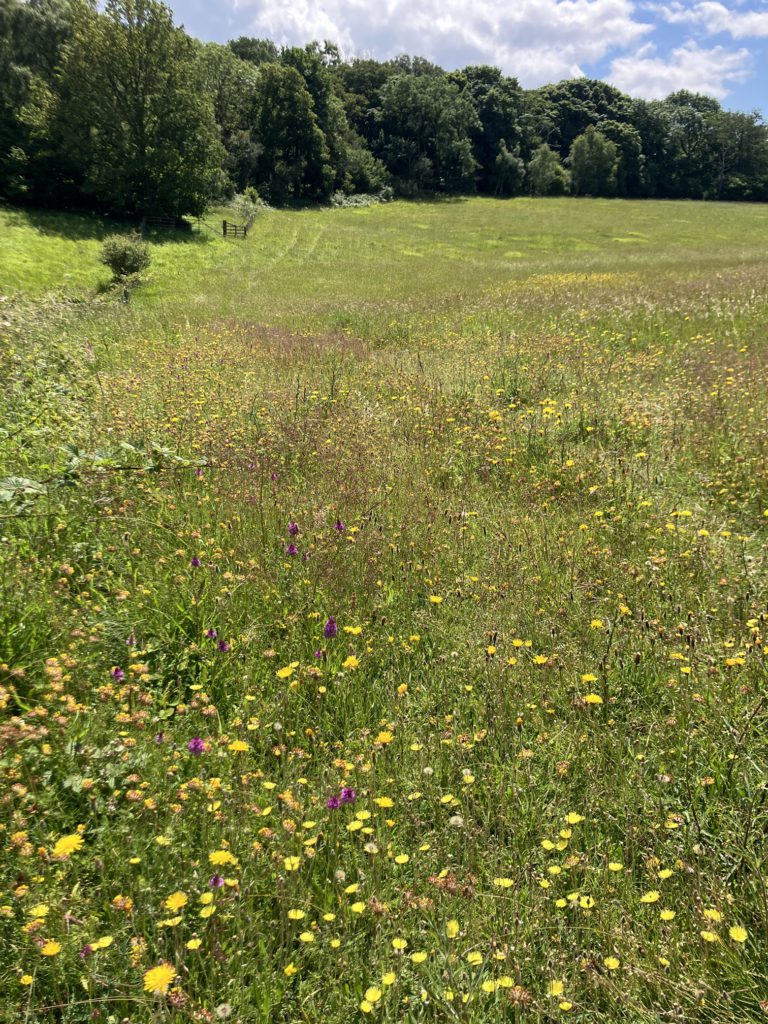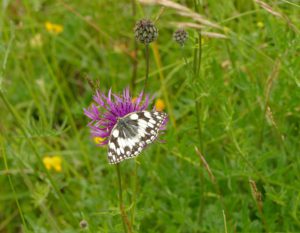Robert’s field – Saturday June 29th 2024

Robert’s Field in late June
Robert’s Field is a 4-hectare limestone rich grassland which has been restored by Lincs Wildlife Trust back to its former glory. These meadows were a common sight in the countryside before the first world war, and since its restoration it has become home to an impressive number of limestone plants, not to mention the different species of butterflies found here. In the 1950’s, before the Forestry Commission got hold of it (1960’s) to plant most of the site with conifers, it was one of the best places in Lincolnshire to find butterflies – as many as 25 species to be found here. In 1991 the Trust purchased the lease and set about restoring the land back to its grassland roots and after a bit of trial and error, Robert’s field in the early summer is now a wonderful spectacle of colour from both the butterflies and especially the variety of flowers that we found there.
Despite David Vendome from Lincs Wildlife Trust not being able on this occasion to show us around this little meadow, (in the middle of nowhere it seemed – down little country lanes between Holywell and Pickworth) there were members on hand, notably Jenny Harris and Phil Rudkin, who were able to tell us about its varied history and how it has come to be a floral paradise today.

Marbled White butterfly on Knapweed
Our first shot of colour however, was from a very large orange hornet that was very persistent in shooing us all away from the entrance to the field, so all nine of us quickly took the hint and hastened down into the meadow beneath. Although the weather was overcast, our next sighting was of several Marbled white butterflies taking flight in front of us as we disturbed their resting places. A total of seven butterflies were noted throughout the morning with the Dark green fritillary making an occasional appearance when the cloud lifted. Three moths were also spotted but perhaps because of the weather, bees and other insects were noticeably absent from the surrounding flora. Phil came armed with a Bat 4 recorder which can also be used to identify various species of Grasshopper and Crickets, but with persistent cloud above, it didn’t really crackle into life until much later in the morning. Phil also reminded us that at this time of the year we generally only find nymphs of the orthopteran species anyway, but one of two different species was identified – Roesel’s bush nymph crickets and Meadow brown nymph grasshoppers. Other members concentrated on the birdlife in the hedges around with quite a few of the warblers singing – Blackcap, Whitethroat, Willow warbler and the easily recognized Chiff chaff. The plant life in flower was spectacular; a total of 33 species were recorded over the morning with notables being Wild liquorice, Rockrose, Dropwort, Fairy flax, Dyer’s greenweed and three orchids – Bee, Pyramidal and Common spotted. One plant however, (in hindsight) has stumped us all, but only because we didn’t examine it properly at the time. Looking a bit like a cross between a harebell and clustered bellflower, it seemed to show characteristics of both. Maybe there is a lesson to be learnt somewhere!